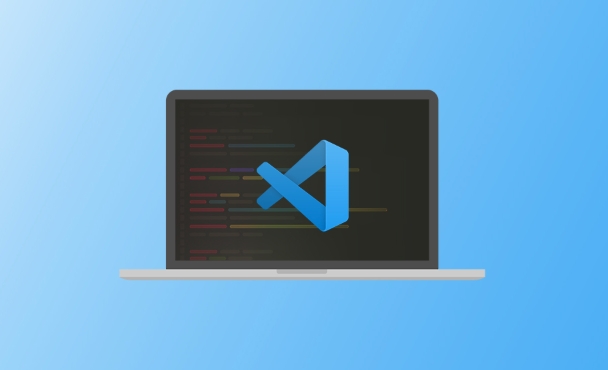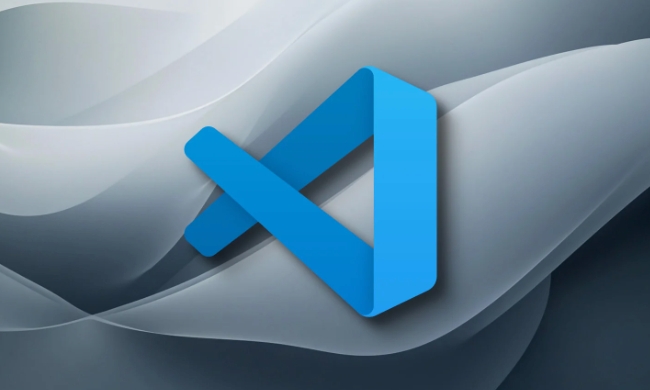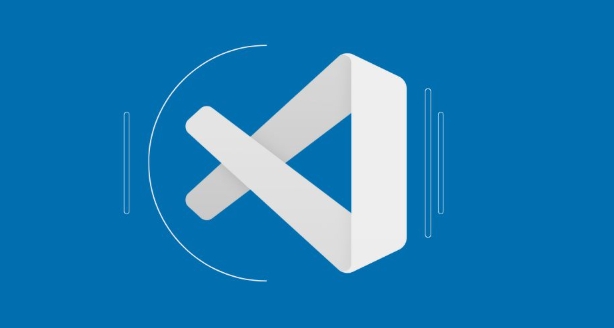How to connect to a SQL database in VSCode
Jul 28, 2025 am 02:58 AM- Install the SQLTools extension and the appropriate driver extension for your database type in VSCode. 2. Open the Command Palette, select "SQLTools: New Connection", choose your database type, and enter connection details such as host, port, username, password, and database name. 3. Create a .sql file, write a query like SELECT * FROM users, then execute it via right-click or the Play button to view results in a new tab, with optional browsing of database objects and direct data editing in some versions. For SQLite, simply install the SQLite driver, create a connection pointing to your .db file, and start querying without authentication.

Connecting to a SQL database in VSCode isn’t built in by default, but it’s easy to do using extensions. Here’s how you can connect and work with a SQL database directly in VSCode.

1. Install a SQL Extension
VSCode supports database connections through extensions. The most popular one is "SQLTools" — it supports multiple databases like PostgreSQL, MySQL, SQLite, SQL Server, Oracle, and more.
Steps:

- Open VSCode.
- Go to the Extensions view by clicking the Extensions icon in the Activity Bar or pressing
Ctrl Shift X. - Search for "SQLTools".
- Install the SQLTools extension (by mtxr) and its companion driver extension (e.g., SQLTools MySQL, SQLTools PostgreSQL, etc.).
?? You’ll need both the core SQLTools extension and the appropriate driver extension for your database type.
2. Add a New Database Connection
Once installed, set up a connection to your database.

Steps:
- Press
Ctrl Shift Pto open the Command Palette. - Type "SQLTools: New Connection" and select it.
- Choose your database type (e.g., MySQL, PostgreSQL, SQLite, etc.).
- Fill in the connection details:
-
Database server host (e.g.,
localhostor an IP) - Port (e.g., 3306 for MySQL, 5432 for PostgreSQL)
- User name
- Password
- Database name (optional, can connect without one)
- Connection name (a friendly label)
-
Database server host (e.g.,
Example (MySQL):
{
"name": "Local MySQL",
"server": "localhost",
"port": 3306,
"username": "root",
"password": "yourpassword",
"database": "testdb",
"driver": "MySQL"
}The connection will be saved in a SQLTools configuration file (usually in your user or workspace settings).
3. Run SQL Queries
After connecting:
- Create a new file with a
.sqlextension. - Write your SQL query, e.g.:
SELECT * FROM users;
- Right-click in the editor and choose "Execute Query" or press the "Play" button in the top-right of the editor.
- Results will appear in a new tab showing rows, execution time, and affected rows.
- Browse database objects (tables, views, etc.) in the SQLTools sidebar.
- Edit data directly in result grids (in some versions).
- Save and organize common queries in
.sqlfiles. - Install SQLTools and SQLTools SQLite driver.
- Use "New Connection" → select SQLite.
- Point to your
.dbor.sqlitefile on disk. - No username/password needed — connection happens instantly.
You can also:
Optional: Use SQLite (No Setup Needed)
For SQLite, it’s even simpler:
That’s it. With SQLTools, you get a lightweight but powerful SQL client inside VSCode. Just remember: always secure your credentials and avoid hardcoding passwords in shared environments.
Basically, install SQLTools, add a connection, and start querying — no external tools needed.
The above is the detailed content of How to connect to a SQL database in VSCode. For more information, please follow other related articles on the PHP Chinese website!

Hot AI Tools

Undress AI Tool
Undress images for free

Undresser.AI Undress
AI-powered app for creating realistic nude photos

AI Clothes Remover
Online AI tool for removing clothes from photos.

Clothoff.io
AI clothes remover

Video Face Swap
Swap faces in any video effortlessly with our completely free AI face swap tool!

Hot Article

Hot Tools

Notepad++7.3.1
Easy-to-use and free code editor

SublimeText3 Chinese version
Chinese version, very easy to use

Zend Studio 13.0.1
Powerful PHP integrated development environment

Dreamweaver CS6
Visual web development tools

SublimeText3 Mac version
God-level code editing software (SublimeText3)

Hot Topics
 Laravel environment construction and basic configuration (Windows/Mac/Linux)
Apr 30, 2025 pm 02:27 PM
Laravel environment construction and basic configuration (Windows/Mac/Linux)
Apr 30, 2025 pm 02:27 PM
The steps to build a Laravel environment on different operating systems are as follows: 1.Windows: Use XAMPP to install PHP and Composer, configure environment variables, and install Laravel. 2.Mac: Use Homebrew to install PHP and Composer and install Laravel. 3.Linux: Use Ubuntu to update the system, install PHP and Composer, and install Laravel. The specific commands and paths of each system are different, but the core steps are consistent to ensure the smooth construction of the Laravel development environment.
 Use VSCode to perform version fallback operation of code
May 15, 2025 pm 09:42 PM
Use VSCode to perform version fallback operation of code
May 15, 2025 pm 09:42 PM
In VSCode, you can use Git for code version fallback. 1. Use gitreset--hardHEAD~1 to fall back to the previous version. 2. Use gitreset--hard to fall back to a specific commit. 3. Use gitrevert to safely fall back without changing history.
 Environment configuration for running Ruby code in VSCode
May 15, 2025 pm 09:30 PM
Environment configuration for running Ruby code in VSCode
May 15, 2025 pm 09:30 PM
Configuring the Ruby development environment in VSCode requires the following steps: 1. Install Ruby: Download and install from the official website or using RubyInstaller. 2. Install the plug-in: Install CodeRunner and Ruby plug-ins in VSCode. 3. Set up the debugging environment: Install the DebuggerforRuby plug-in and create a launch.json file in the .vscode folder for configuration. This way, you can write, run, and debug Ruby code efficiently in VSCode.
 How to manually install plugin packages in VSCode
May 15, 2025 pm 09:33 PM
How to manually install plugin packages in VSCode
May 15, 2025 pm 09:33 PM
The steps to manually install the plug-in package in VSCode are: 1. Download the .vsix file of the plug-in; 2. Open VSCode and press Ctrl Shift P (Windows/Linux) or Cmd Shift P (Mac) to call up the command panel; 3. Enter and select Extensions:InstallfromVSIX..., then select .vsix file and install. Manually installing plug-ins provides a flexible way to install, especially when the network is restricted or the plug-in market is unavailable, but attention needs to be paid to file security and possible dependencies.
 Configure VSCode and GitHub for code synchronization
May 20, 2025 pm 06:33 PM
Configure VSCode and GitHub for code synchronization
May 20, 2025 pm 06:33 PM
Configuring VSCode to synchronize code with GitHub can improve development efficiency and team collaboration. First, install the "GitHubPullRequestsandIssues" and "GitLens" plugins; second, configure the GitHub account; then clone or create a repository; finally, submit and push the code to GitHub.
 Best Practices for Writing JavaScript Code with VSCode
May 15, 2025 pm 09:45 PM
Best Practices for Writing JavaScript Code with VSCode
May 15, 2025 pm 09:45 PM
Best practices for writing JavaScript code in VSCode include: 1) Install Prettier, ESLint, and JavaScript (ES6) codesnippets extensions, 2) Configure launch.json files for debugging, and 3) Use modern JavaScript features and optimization loops to improve performance. With these settings and tricks, you can develop JavaScript code more efficiently in VSCode.
 Experience in participating in VSCode offline technology exchange activities
May 29, 2025 pm 10:00 PM
Experience in participating in VSCode offline technology exchange activities
May 29, 2025 pm 10:00 PM
I have a lot of experience in participating in VSCode offline technology exchange activities, and my main gains include sharing of plug-in development, practical demonstrations and communication with other developers. 1. Sharing of plug-in development: I learned how to use VSCode's plug-in API to improve development efficiency, such as automatic formatting and static analysis plug-ins. 2. Practical demonstration: I learned how to use VSCode for remote development and realized its flexibility and scalability. 3. Communicate with developers: I have obtained skills to optimize VSCode startup speed, such as reducing the number of plug-ins loaded at startup and managing the plug-in loading order. In short, this event has benefited me a lot and I highly recommend those who are interested in VSCode to participate.
 Solve the coding settings and garbled problems of VSCode when dealing with multilingual projects
May 22, 2025 pm 10:57 PM
Solve the coding settings and garbled problems of VSCode when dealing with multilingual projects
May 22, 2025 pm 10:57 PM
VSCode solves the problems of multilingual project coding and garbled code including: 1. Ensure that the file is saved with correct encoding and use the "redetection encoding" function; 2. Set the file encoding to UTF-8 and automatically detect the encoding; 3. Control whether to add BOM; 4. Use the "EncodingConverter" plug-in to convert encoding; 5. Use the multiple workspace functions to set encoding for different sub-projects; 6. Optimize performance and ignore unnecessary file monitoring. Through these steps, the coding problem of multilingual projects can be effectively dealt with.






